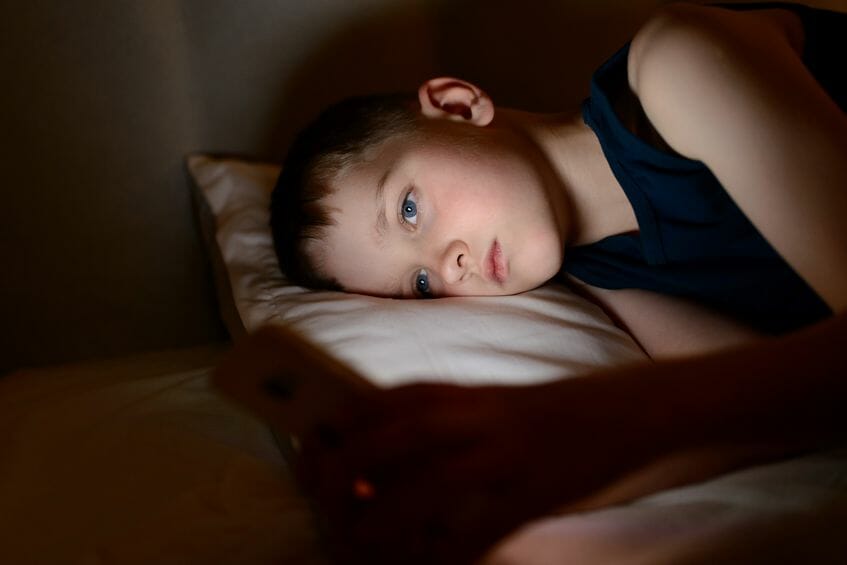Autism Spectrum Disorder And Insomnia – The Facts And The Strategies
For parents of children with Autistic Spectrum Disorders (ASD), bedtime can be a nightmare. Insomnia in those with ASD is considered to be endemic, with up to 80% of those on the spectrum regularly suffering from some form of sleep disorder. This compared to 20-40% among children who do not have ASD. Sleep issues include the following in children with ASD.
• Difficulty falling asleep
• Difficulty staying asleep
• Early morning awakening
• Short sleep duration
• Erratic sleep patterns
• Hyperarousal or anxiety around bedtime
• Excessive sleepiness during the day
Causes of Insomnia for those with ASD
Our sleep patterns are determined by a wide range of factors, both chemical and psychological. Internally we have circadian rhythms that provide our internal body clock with cues for our energy and concentration levels. These rhythms are determined by the release of hormones, and these, in turn, are governed by a wide range of things such as activity level and light exposure. For those who have ASD, the brain’s ability to respond to external cues is often different from other children and as such circadian rhythms can be disrupted. This can mean that instead of feeling tired at bedtime, children with ASD may enter a state of hyperarousal. Or instead of waking at dawn those with ASD may spring alert in the middle of the night and be unable to get back to sleep. Regulating the body-clock to provide more rest can have a positive impact on children with ASD.
Tackling contributing factors and setting routines
There is a range of contributing factors for children with ASD that cause sleep disorders. The common factors include changes in routine, a suboptimal sleeping environment, lack of exercise, food and over stimulation of the brain prior to bedtime.
Set Routines
Routines need to be fixed and repeated. For those with ASD, routines are so important. These routines can help to regulate hormone levels and reset the body clock.
Create a Soothing Sleeping Environment
Bedrooms need to be dark and quiet. Some children with ASD report that they sleep better with the pressure from heavier sheets but that at the same time they need a cool room to avoid waking up due to overheating. Many of those with ASD have hypersensitivity so all bedclothes and pajamas need to be as comfortable for your child as possible. These gummies can help kids with insomnia troubles.
Encourage Exercise
Daytime exercise or other physical activity can help a child with ASD feel naturally tired at night. A daily routine of physical activity teaches the brain to recognize the need for both energy and rest and recovery.
Monitor Meal and Snack Times
Final meals should be a number of hours before bedtime and there should be no sugary snacks on the run-up to sleep. If the child needs something prior to bed, a mug of warm milk, which has tryptophan can promote sleep.
Try Relaxation Techniques
Try meditation, listening to soothing music or reading at bedtime.
Limit Technology Before Bed
There should be no technology usage including TV, iPad, gaming devices, etc. prior to bedtime. All pre-bed behaviors should be calm.
Keep Calm
Bedtime can be a frustrating time for a tired parent, but anger causes stimulation. Positive rewarding of correct behavior rather than punishment for infringements helps to keep things calm and gets much better results. So, remain calm, and constantly return to the same system, night after night to help manage insomnia.
Medicinal Intervention
Medication is an alternative once routines are in place and behavioral therapy has been attempted. However, doctors may look to see if there are any other illnesses that could be having an impact on sleeping before prescribing medication which should be the last resort.
The Kidmunication Point
A child needs an adequate amount of sleep for learning (attentiveness), playing (energy) and socializing (mood). Therefore, it is very important to give your child with autism a chance to get as much sleep as possible. Insomnia can be a complex issue to remedy, so start by managing the external stimuli mentioned above. Eliminating some causes will make it easier to focus on other possible factors causing your child’s insomnia.
This is a guest post from Jane Wilson who spent over a decade working as a therapist and is now a freelance writer and editor.

